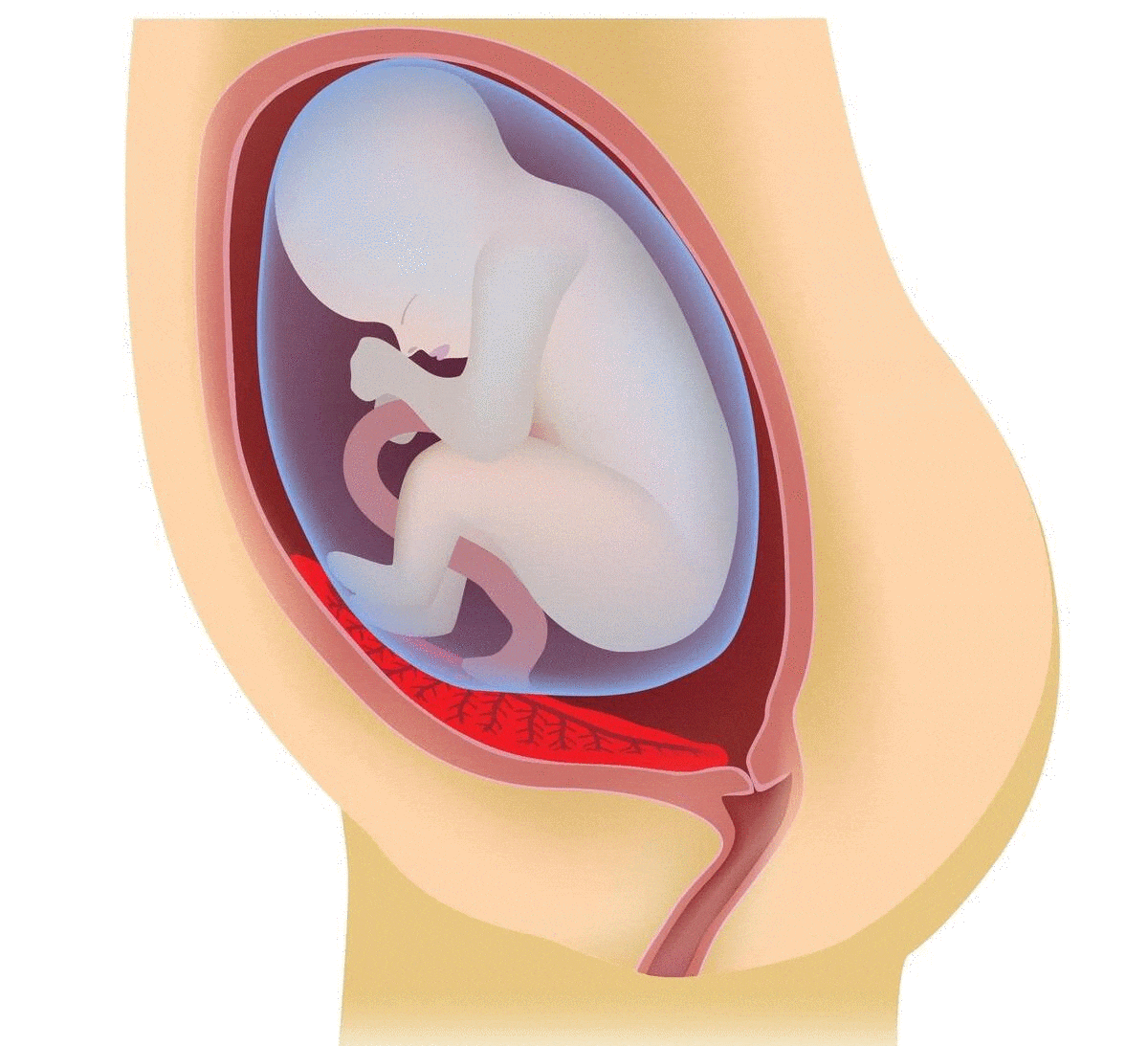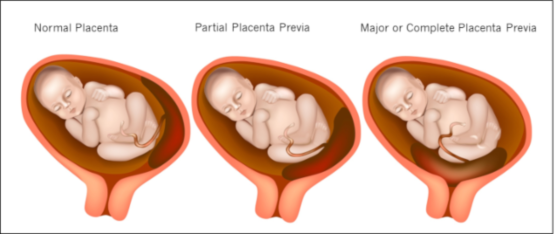Kriti Dutt, 27, panicked when she found out about a low lying placenta at 12 weeks. Unsure of what it meant, she searched online for answers to her questions, consulted her doctor and eventually decided to get a second opinion.
When she met Dr. Anita Sabherwal Anand, Senior Consultant Obstetrician-Gynecologist at Sitaram Bhartia Hospital in Delhi, her concerns were immediately put to rest.
The doctor explained, “The placenta is an organ that is located against the wall of the uterus during pregnancy. The fetus derives its nutrition via the umbilical cord that stems from the placenta. The waste matter of the fetus is also transferred by the cord through the placenta and expelled.”
What is a Low-Lying Placenta in the First and Second Trimester (12-28 weeks)?
“In the early weeks of pregnancy, from 12 – 20 weeks, it is common to see the placenta in the lower segment of the uterus, near the cervix,” says Dr. Anita.
“This is termed low-lying placenta and is a natural phenomenon. “
What causes low-lying placenta?
The exact reasons for low-lying placenta are unclear.
Is bed rest necessary for low-lying placenta?
Bed rest is not routinely advised for a low placenta unless there is heavy bleeding.
Upon hearing that, Kriti wanted to know the implications of a low placenta.
Is it dangerous to have a low lying placenta?
A low lying placenta in the early weeks of pregnancy, up till 20 weeks, is typically not dangerous.
Can a low placenta move up?
As the uterus grows and expands during pregnancy, the position of the placenta seems to move away from the cervix or move upwards.
“There are no methods or remedies to move the placenta up naturally.”

The animation above shows how the position of the placenta may shift.
Kriti seemed satisfied with all the information except for one lingering doubt. She asked, “What if I have a low-lying placenta at 20 weeks and after that?”
“If you have a low-lying placenta in your 18 to 20 week scan you will be advised another ultrasound at around 32 weeks to assess the position of the placenta in the third trimester, “ assures Dr. Anita.
According to the Royal College of Obstetricians and Gynecologists (RCOG), the placenta moves up in 90% of women who have a 20 week scan showing a low lying placenta.
What is a Low-Lying Placenta in the Third Trimester (after 28 weeks)?
If the placenta is seen to be in the lower part of the uterus in the third trimester, then the situation is known as ‘Placenta Previa’.
Kriti was curious to know more about any signs of Placenta Previa that she should have noticed earlier on.
If you are located in Delhi and looking for an experienced gynaecologist for a second opinion on the low-lying placenta, book a paid consultation by clicking the button below.
Are there any Symptoms of Placenta Previa?
“Most mothers have no symptoms with Placenta Previa. A few may have painless bleeding. This may require you to be on bed rest, “ said Dr. Anita.
“The only way to diagnose or detect a low lying placenta is through an ultrasound.”
Chances of developing Placenta Previa
Your chances of having placenta previa may increase if you’ve had a previous cesarean. It is important, therefore, that a c-section delivery is conducted only when medically indicated.
Other risk factors include:
- Being older than 35 years
- An abnormal shape of the uterus
- Carrying more than one baby
Read: C-Section Delivery: 9 Indications Where It May Be Avoidable
Complications Due to Low Lying Placenta in Third Trimester (Placenta Previa)
“Any major bleeding caused by the low lying placenta in the third trimester could pose a risk for both mother and baby. But mostly the bleeding is intermittent and small to moderate. “
“You must contact your gynecologist right away in case you experience any bleeding, contractions or pain,” cautioned Dr. Anita.
Types of Placenta Previa
Complete or Total Placenta Previa: If the placenta is covering the cervix, the condition is called total placenta previa. In this case, a c-section will be required as the baby’s passage through the cervix is blocked by the placenta.
Marginal Placenta Previa: In this condition, the placenta grows at the bottom of the uterus adjacent to the cervix.
“If the placenta does not reach the cervix, you can safely try for a normal delivery.”
Partial Placenta Previa: In this situation, the placental edge may partially cover the cervix and a vaginal delivery may not be advised.

Kriti seemed relieved when she heard that a normal birth may be possible with a low placenta in the third trimester, depending on the placenta position during pregnancy.
She had imagined giving birth normally, and wanted to do everything possible to realise her dream of having a natural birth supported by her husband.
What is the recommended treatment for Low-lying Placenta?
In most cases, the placenta moves upwards on its own as the uterus increases in size, and there is no specific treatment for a low placenta.
“A low-lying placenta may not always result in ‘Placenta Previa’, and so you shouldn’t get confused between the two situations, “ clarified Dr. Anita.
By now Kriti understood that she didn’t have a reason to worry but she was keen to know dos and don’ts with low-lying placenta, to ensure she had the best chance at a vaginal delivery.
What are the precautions for Low-Lying Placenta?
Precautions for low lying placenta at 14 – 20 weeks are required only in a few cases. Women with placenta previa should
Avoid sexual intercourse
If you have had bleeding with a low placenta, you may be advised to refrain from intercourse as this may worsen the bleeding.
Stay on bed rest
Bed rest may be advised if you experience bleeding. The duration and permitted movements are best discussed with your doctor.
Consume Iron rich Foods
Eat foods rich in iron to reduce the risk of anaemia during pregnancy. Bleeding may cause you to lose the required number of blood cells and thereby lower your Haemoglobin levels.
Don’t skip consultations
A repeat scan will be required around 32 weeks to assess the position of the placenta. Most of the time the placenta will have moved away from the cervix. In case the placenta is still covering the cervix or you notice bleeding, you will be constantly monitored to evaluate your well-being and your baby’s health.
“This is why it is essential to keep track of your consultations and speak to your doctor as advised,”
Encouraged by her detailed consultation, Kriti decided to continue with the doctor whose thoughts and approach toward a normal birth matched her own. She eventually went on to normally deliver a healthy baby girl.
The majority of women who have a low-lying placenta in the second trimester go on to have a normal delivery without any complications at Sitaram Bhartia.
Hear from Shilpa Newati, one such mother, who came to us at 32 weeks with a low-lying placenta and a breech baby for a second opinion on her condition.
“Despite a low lying placenta and a breech baby, I was able to have a normal delivery at Sitaram Bhartia, even though gynecologists at another hospital told me I had a 99% chance of a caesarean.”

FAQs about Low-Lying Placenta & Placenta Previa
Q. What is the best low-lying placenta sleeping position?
There is no specific sleeping position for low-lying placenta. You should sleep in the position that is comfortable for you. In the later half of the pregnancy, it is best to sleep on the side. You can use pillows and cushions for support.
Q. Are there any sitting positions for low lying placenta?
No, there are no restrictions on the way you can sit.
Q. What is meant by a posterior low lying placenta?
This means that the placenta is attached to the back wall of the uterus but is in the lower part of the uterus. It is possible for this kind of placenta to also ‘shift away’ from the cervix as the pregnancy progresses.
Read: Posterior Placenta: 5 Myths (and facts) You Need to Know
Q. Does a posterior low lying placenta indicate a boy or girl?
There is no credible research that proves that a posterior placenta indicates a particular gender.
Q. Are there any precautions to take with an anterior placenta ?
An anterior placenta simply means that the placenta is attached to the front wall of the uterus. This is a normal situation and no precautions are needed.
Q. What does ‘placenta reaching internal os’ mean?
This indicates that the placenta is actually low-lying and it’s lowermost part is at the level of the cervix. ‘Internal os’ refers to the opening of the cervix at the upper end. In such cases if the placenta continues to be in this position after 34 to 36 weeks a cesarean section is planned.
Q. What does ‘placenta 3 cm away from internal os’ indicate?
This indicates that the placenta is low-lying but it is away from the opening of the cervix. Normal delivery is mostly possible in cases with placenta more than 2cm from the os, particularly if it is anterior. A cesarean is recommended if there is heavy recurrent bleeding in such positions or if the lower part of placenta is less than 2cm from the os.
If you are unsure about your situation, it is better to consult a gynaecologist. Schedule your appointment by clicking the button below with Dr Anita at Sitaram Bhartia Institute of Science and Research, Delhi.
 This blog has been written with editorial inputs from Dr. Anita Sabherwal Anand. She is an Obstetrician-Gynecologist with over 22 years experience, who is known among couples for her detailed consultations.
This blog has been written with editorial inputs from Dr. Anita Sabherwal Anand. She is an Obstetrician-Gynecologist with over 22 years experience, who is known among couples for her detailed consultations.
This article was first written in 2017 and has been updated in October 2020.
Liked this article? Follow us on Facebook, Twitter, Youtube and Instagram for more content!


